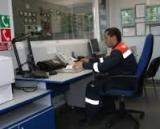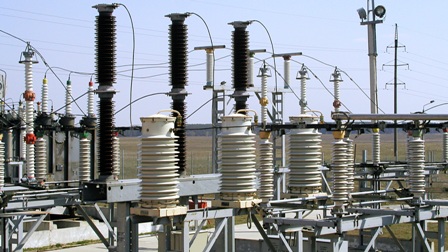Actions of substation personnel in the event of a complete shutdown of the power system
 In this article, we will consider the procedure for the actions of the operating personnel who serve the substations in the event of a complete shutdown of the power system.
In this article, we will consider the procedure for the actions of the operating personnel who serve the substations in the event of a complete shutdown of the power system.
First, you need to understand what a network buyout is. Let's highlight the most characteristic signs of this emergency:
— complete blackout of the substation, i.e. lack of voltage in the bus systems (sections) of all voltage classes;
— on position of the switches of the power line that supply the substation;
— reduction of the operating frequency to zero, as well as activation of the emergency control system (one of the queues for automatic frequency unloading);
— lack of signals to trigger devices for relay protection and automation.
When the power system is paying off, the main task is to supply voltage to the most important consumers, the disposal of which can lead to negative consequences, in particular the occurrence of technological disasters and loss of human life. In each region (district), the leadership of the operational-dispatch service of the power system compiles a list of consumer enterprises and, depending on the nature of production, the presence of dangerous factors, the sequence of the supply voltage to them is determined.
First of all, the tension is applied to metallurgical enterprises, enterprises of the chemical and mining industries, as well as to other enterprises, the disposal of which could lead to negative consequences.
Next in turn are water supply and sewage facilities, railway traction substations and other facilities.
Hospitals, communications facilities, military installations and other important users can be added to the list of sites that need to be powered first. The power supply to the remaining consumers is restored after the resumption of normal operation of the power system.
The coordination of the actions to restore the normal operation of the electricity system is carried out by the operational-dispatch office of this region (district) together with the offices of the electricity supply companies, which in turn coordinate the actions of the operating personnel of the substations.
The main task of the operating personnel of the substation is to restore the power supply to the consumers in accordance with the accepted sequence.
First of all, you need to make sure based on the above criteria that there has been a complete shutdown of the power system.
To avoid re-shutdown of the power system after energization, substation personnel must turn off all switches on user connections, except those that must be turned on first.
It must also be taken into account that when the power system pays off, consumers will not be able to operate normally. In this case, the main task is to maintain the operation of the most important systems of enterprises. For example, in a mine, first of all, it is necessary to ensure the operation of the ventilation, drainage, lifting and communication systems.
After these operations are completed, the operating personnel notifies the dispatcher and waits for power. After energizing, personnel must control the load on the connections in accordance with the established power limit.
For example, in normal operation, the mine consumed an average of 10-12 MW, and in the event of a power system shutdown, to maintain the operation of its most important systems, a load limit of 2-4 MW is set.
Until the power system is fully restored, the main task of the substation personnel is to control the load on the connections. In case of exceeding the established power limit, this connection is broken.
In addition, at the direction of the dispatcher, operating personnel restore power to other users in accordance with the established sequence.
Very often, when the substation is completely off, there can be a lack of communication.This is mainly due to the failure, for one reason or another, of autonomous power supplies of communication equipment in the substation. Operations personnel in this case must contact higher-level personnel of others communication channels, and in their absence, to take immediate measures to restore communication and, after its restoration, to inform the senior staff about the operations carried out.

